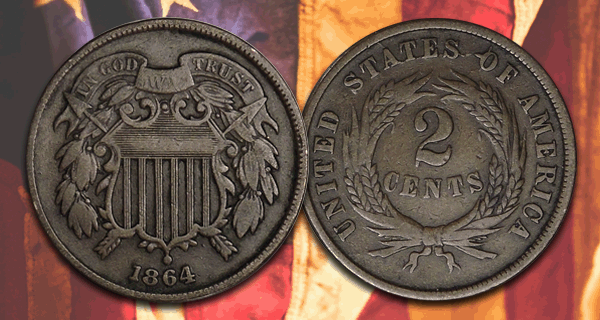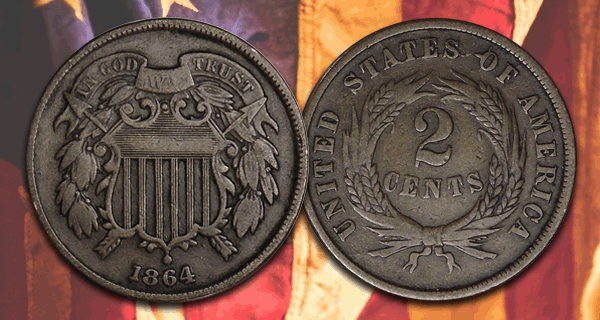An American Oddball
Mar 19th 2019

The Civil War gave birth to a numismatic one hit wonder of sorts. Minted for just 10 short years (well, nine for circulation strikes), the two cent piece was one of America's least popular coins ever created. Now considered an odd denomination, a two cent piece was once useful, if only for the blink of an eye.
If at First You Don't Succeed...
The creation of the two cent piece was first proposed by Connecticut Senator Uri Tracy in 1806. Senator Tracy was a pupil of the school of thought that a coin should contain its value in its metal content. He proposed the two cent piece be made of billon (an alloy of copper with a small percentage of silver). The Mint Director promptly squashed the idea, as this metal could be counterfeited by scoundrels with ease.
The concept of a two cent piece was once again rekindled in the 1830s, during which time sample coins were created from a 10% silver and 95% copper composition as suggested years earlier, but the same conclusion was reached — billon would not suffice.
Never Fear... The Two Cent Piece Is Here!
Fast forward to 1863. While America was in the depths of the Civil War, coins with precious metal content had all but disappeared from circulation, as concerned citizens hoarded them fearing that paper money would become useless. At this time privately made base metal tokens circulated freely. The Powers That Be took note of these "Civil War tokens" and the consideration to use base metal to replace vanished currency was now on the table.
The Coinage Act of 1864 declared base metal tender legal for the first time. This legislation changed the metal composition of the cent and finally, 58 years after it was just a twinkle in Senator Tracy's eye, the inception of the two cent piece.
Since the eruption of the Civil War in 1861, religious fervor had swept across the nation. The new coin reflected this sentiment and bore for the first time the inscription IN GOD WE TRUST boldly on its obverse. Designed by Chief Engraver James B. Longacre, the French bronze two cent piece was almost as large as a modern day quarter, with a heavily symbolized, gothic-esque rendering of the Great Seal of the United States on its obverse and 2 CENTS encircled by a wheat wreath on its reverse.
One Hit Wonder
Initially, the new two cent piece was like the most popular kid in school. Nearly 20 million pieces were minted in Philadelphia in 1864 and the American public, hungry for coins of any sort, gobbled them up. The following year, the mintage declined slightly to around 13 million, but after the war's end and with the reappearance of previously hoarded coins, its popularity waned and trickled off until it plummeted in 1872, when only 65,000 coins were produced. The two cent series ended with a dying gasp in 1873 when only proof versions were struck.
Although this unpopular coin did not survive in commerce for long, the two cent piece will go down in the pages of numismatic history not for its rejection, but for being the first circulation coin to carry the motto IN GOD WE TRUST. Over a century and a half later, this oddball coin is a later bloomer of sorts — now collectors have taken a shine to it, favoring the coin for its peculiar denomination and low production.

